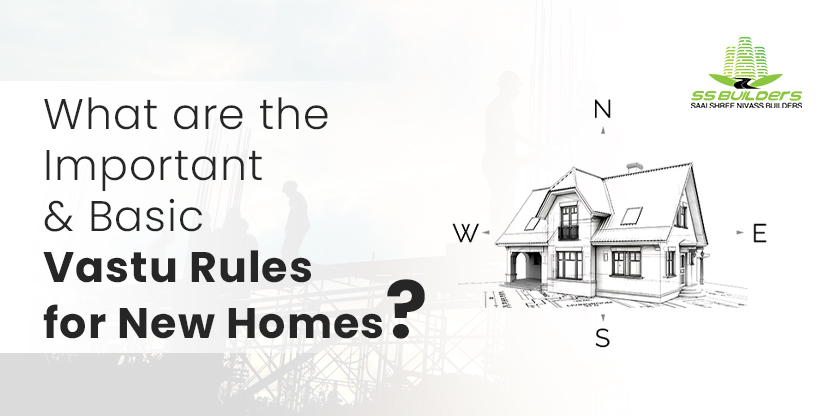Essential Vastu Rules for New Homes to Follow
Introduction:
Vastu Shastra, an ancient Indian architectural science, emphasizes the harmonious alignment of a home with natural and cosmic energies. The principles of Vastu are believed to enhance the well-being, prosperity, and overall positive energy flow within a living space. If you’re moving into a new home or planning to build one, understanding the fundamental Vastu rules can help you create a balanced and auspicious environment. In this article, we will explore some of the important and basic Vastu rules for new homes.
Entrance and Main Door:
The main entrance plays a crucial role in Vastu, as it is the gateway for energy to enter the house. Here are a few guidelines for the entrance and main door:
- The main door should face towards the north, east, or northeast for maximum positive energy flow.
- Avoid having any obstructions like trees, poles, or buildings blocking the entrance.
- Ensure the main door is larger than other doors in the house and opens in a clockwise direction.
- Decorate the entrance with auspicious symbols like rangoli, torans, or religious symbols to invite positive energy.
Placement of Rooms:
The placement of different rooms within the house can significantly impact the energy levels. Consider the following tips:
- The master bedroom is best located in the southwest direction for stability and good health.
- Children’s rooms are recommended in the west or northwest direction.
- The kitchen should ideally be in the southeast corner to promote positive energy related to nourishment and abundance.
- Avoid constructing bathrooms or toilets adjacent to the kitchen or dining area to prevent energy clashes.
Pooja (Prayer) Room:
A designated space for prayer and meditation can create a serene atmosphere. Here’s what to keep in mind:
- The pooja room should be in the northeast corner of the house, as this direction is associated with spiritual energy.
- Keep the room clutter-free, well-lit, and ventilated.
- Place idols or religious symbols at an appropriate height and facing east or west during worship.
Colors and Décor:
The choice of colors and décor influences the overall Vastu of a house. Consider the following recommendations:
- Opt for soothing colors like light blue, green, or white for the walls, as they promote a calm and peaceful environment.
- Avoid using dark shades or excessive red in the bedroom, as they can disrupt sleep patterns.
- Use natural materials like wood and avoid synthetic or artificial materials as much as possible.
- Arrange furniture in a way that promotes easy movement and allows for the free flow of energy.
Open Spaces and Ventilation:
A well-ventilated and clutter-free environment is essential for positive energy circulation. Here’s what to consider:
- Ensure there is ample natural light and ventilation in all rooms, as it uplifts the energy levels.
- Avoid clutter and keep the living spaces organized and tidy.
- Create open spaces or atriums in the center of the house to facilitate the flow of positive energy.
Conclusion:
By adhering to these basic Vastu rules, you can create a harmonious living space that promotes positive energy, health, and prosperity. However, it’s important to remember that Vastu is a guideline and not a rigid set of rules. Adaptations can be made to suit individual preferences and modern architectural constraints. Ultimately, the goal is to create a balanced and comfortable home that aligns with natural energies and enhances your well-being.
Disclaimer:
Vastu principles are subjective and based on cultural beliefs. It is advisable to consult with a Vastu expert or architect for personalized advice before implementing Vastu guidelines in your home.
For more information, please contact us…

